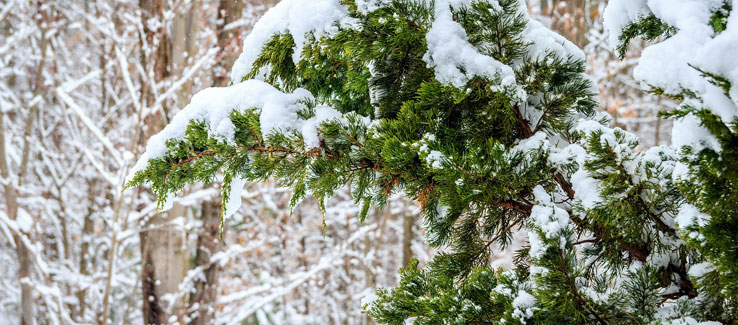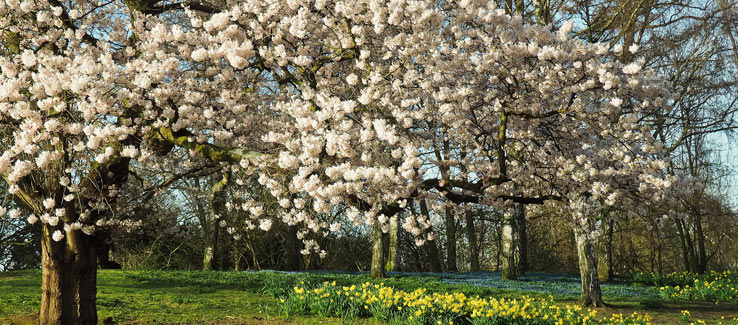
Planting a tree is much more than digging a hole, putting a tree in it, and waiting for it to grow. Such a premise is ideal, but your plans may have to change if your desired species requires certain soil or weather conditions.
In this fasttreeremovalatlanta.com article, you will discover how to choose the right planting location, provide the right soil content for your tree, and how determine which species is right for your unique ecosystem.
Choosing a Tree Planting Location
You shouldn’t walk out and arbitrarily say “I’m going to plant a tree right here!” Instead, you are going to want to select two or three potential locations. Front yard, back yard, or property line, they all can work if the conditions are right.
So, once you’ve made your location selections, the following guideline will help you determine which and whether they are conducive to plant in.
Assessing Landscape and Structural Issues
Depending on the species, over half of a trees’ mass can be in its roots. The majority of them remain from 6in to 18in from the top of the soil. Some of the roots run deep, which is our first point to discuss.

As a tree will send some of its roots deep into the soil, it is important to know what is hidden or buried in the soil. Many cities have a “Call Before You Dig” program. In areas where this is not available, utility companies will generally send a technician to help you assess the situation.
Some of the things you are looking for are underground and will be color coded if uncovered. If any of the following run where you would like to dig, it is advisable that you move on to the next location. The color coding system and its respective utilities were developed by the American Public Works Association and are as follows:
Red – Power Lines, Cables, Conduits and Lighting Cables
Orange – Telecommunications, Alarm Lines, Cable and Internet Service Lines
Yellow – Natural Gas Lines and Other Gaseous or Flammable Material
Green – Sewer and Drain Lines
Blue – Water Main (Drinking Water)
Purple – Reclaimed Water
Pink – Unknown/Unidentified Utilities
White – Digging/Excavation limit or Route
Above ground, you will have to decide on the tree location after taking into consideration the surrounding structures and proximity of the following:
- Your home
- Sheds or other structures
- Fences
- Driveways
- Paved walkways or sidewalks
- Overhead power lines
Remember the following two principle aspects of tree growth as you narrow down the search for the right location.
What You See – As a tree grows, it gets taller, the canopy spreads, and the trunk thickens. In order for a tree to reach its growth potential, you will want to make sure there is nothing obstructing its growth path in all four directions.
What You Don’t See – As that same tree is growing upward, there’s a lot going on beneath the ground. Tree roots are on a constant mission to supply water and nutrients to the tree. They will often times spread 2 to 3 times the size of the canopy, and under the right conditions will grow very deep.
It is the spreading of the roots that will lead them underneath a home’s foundation or a driveway. As they mature and thicken, they will exert an upward pressure, potentially raising, breaking, or buckling whatever property or structure is above them.
Keep in mind that once roots establish themselves underneath a driveway or foundation, that structure becomes a part of the trees’ support system. Thus, the removal of that structure could create an imbalance and eventually cause the tree to fall.
Soil, Temperature and Wind
The other factors that are often overlooked have to do with the soil itself and the weather. Not all trees are suited for all soil types, and not all trees can handle freezing temperatures.

Soil – If the soil is compacted, take steps to aerate it, or turn mulch into it (this will help with drainage as well). Perform a soil test to determine if you have a need for fertilizer or other soil amendment.
Temperature – Before selecting a tree to plant, know which of the 10 USDA Hardiness Zones you are in. These 10 zones are mapped out based on the average annual winter temperature low. Plants, shrubs, and trees all have more potential to thrive within their designated zone.
Wind – If you live in an area that is prone to high winds or susceptible to severe weather, it should play an important role in your decision making for the location and species you will plant. In this scenario, you would probably be more successful with a shorter species located in a semi-protected area.
NOTE: Consider planting hedges and shrubs near the tree. They serve well to absorb and often divert the force of strong winds.
Tree Selection
Now that you have decided on a safe location and verified the soil, it’s time to choose the tree. Below are a few of the things to take into consideration during the selection process:

Evergreen or Deciduous – Evergreens like pine trees, allspice, and palm trees have little loss of foliage and typically stay green all year. Deciduous trees, such as oak, elm, or maple will lose their leaves in the fall and remain dormant through the winter until spring.
Understory or Overstory – Think of it this way, overstory trees like pine trees or elm trees can grow to great height 80 to 100ft. In a jungle, overstory trees are the ones you see from the air looking down. Understory trees are those that grow in the shade of the overstory trees. They will be shorter by nature, still with the potential to reach 20 to 40ft in height. Dogwood, crabapple and magnolias are typical understory trees.

Flowering or Fruit Bearing – Many species of trees will flower at a specific time of year, like magnolias, cherry or dogwood, and this will attract both birds and insects to your yard or landscape.

Fruit trees like apple, mango, fig, lemon, orange, and cherry are also a great option, they will offer annual rewards for your care and attention.
In all of the above options, it is extremely important that these trees be planted in areas that they are adapted to. Use the USDA Hardiness Zone Map before make a final decision on which species are most conducive to plant.
Planting the Right Tree in The Right Place
Armed with the above information, you should be ready to get your tree planted. It is important however to never take for granted that you are adding a living and growing entity to your landscape. Under the right conditions, trees can grow quite large and become very heavy.
Over time, your tree will need to be pruned, trimmed, or even have the crown thinned. The proper watering, fertilizing, and care of your tree will support it in fighting off disease and infestation. Bringing out a reputable tree service for an annual inspection will also serve to prevent any unforeseen issues your tree may experience.
The best way to ensure the long-term health of a newly planted tree begins with your getting the right tree in the right location. To avoid wasting money or energy, do your due diligence, and choose the right trees for the right environment.
For other tree planting tips, take a look at fasttreeremovalatlanta.com/tree-planting-soil-considerations-care-tips
https://plus.google.com/+Fasttreeremovalatlantaservices(404) 220-9965
To view the orignal version of this post, visit: http://www.fasttreeremovalatlanta.com/tree-planting-location-landscape-species

No comments:
Post a Comment